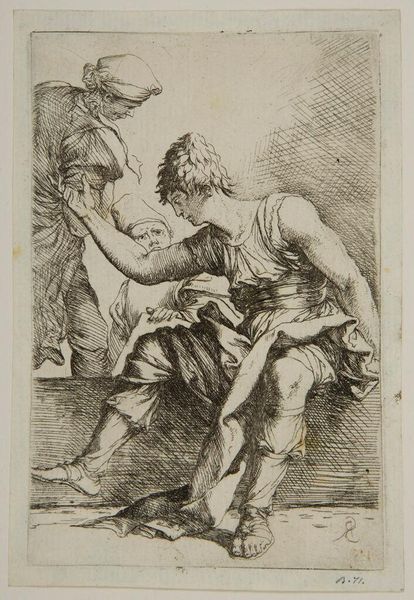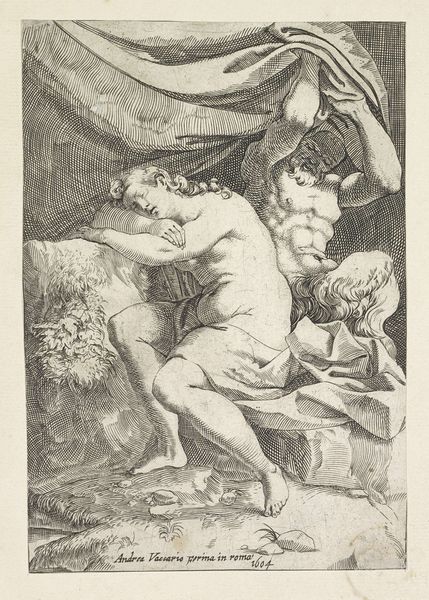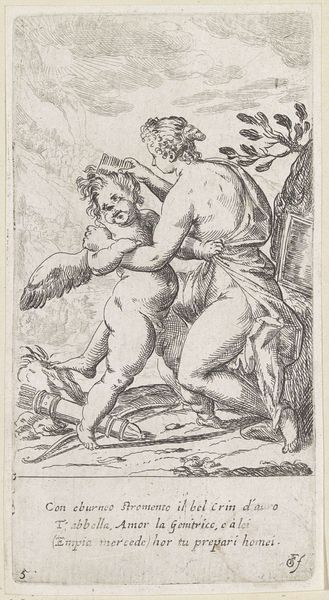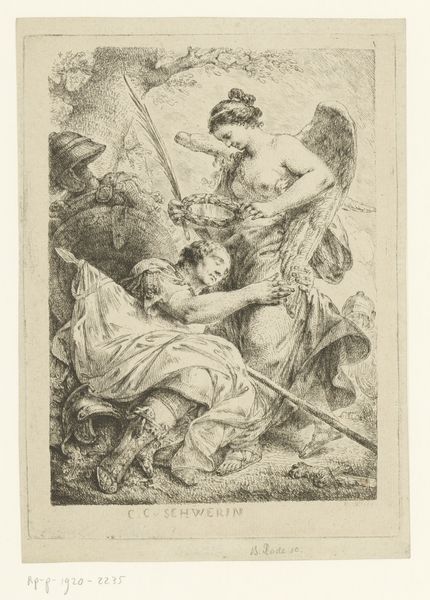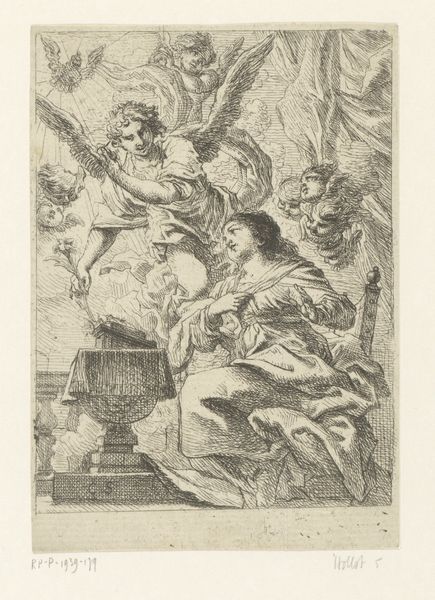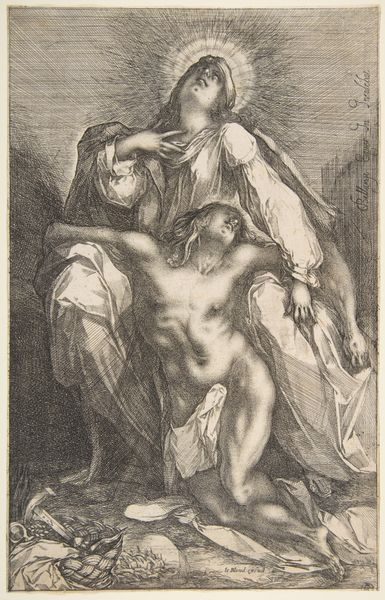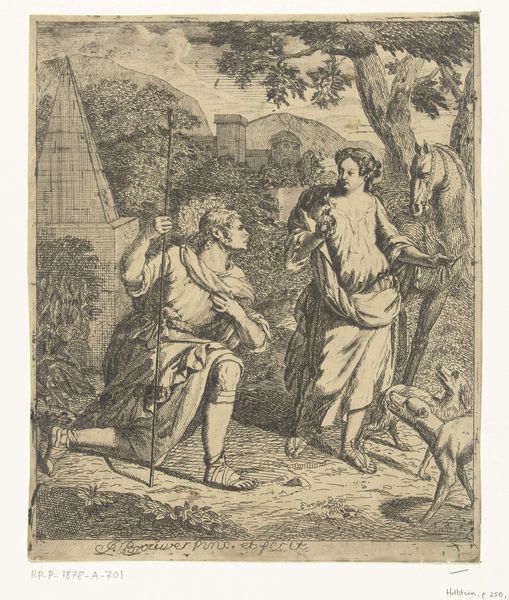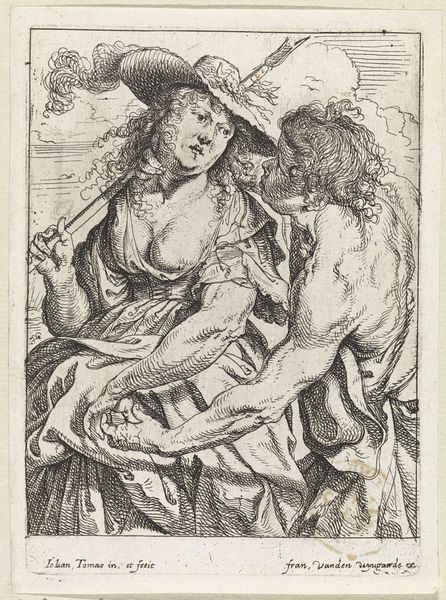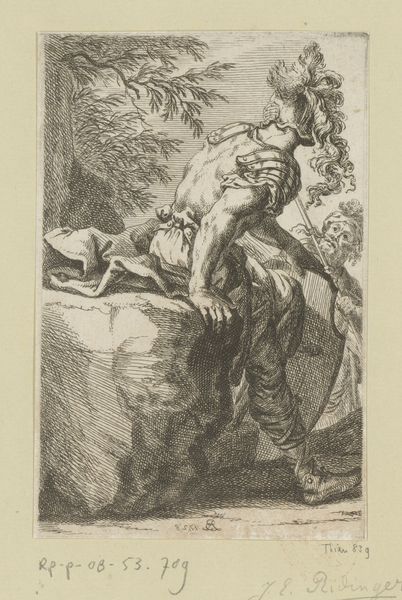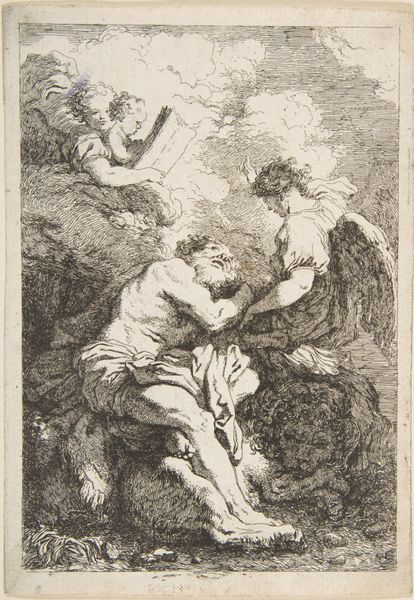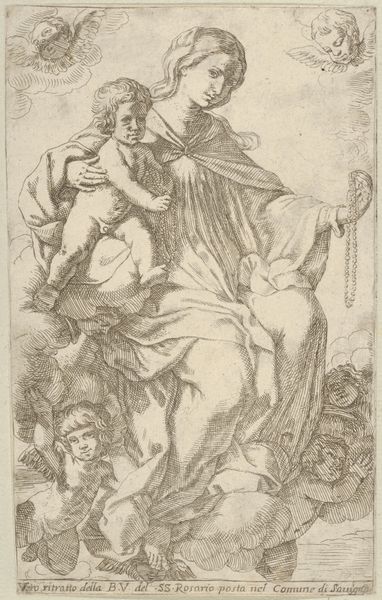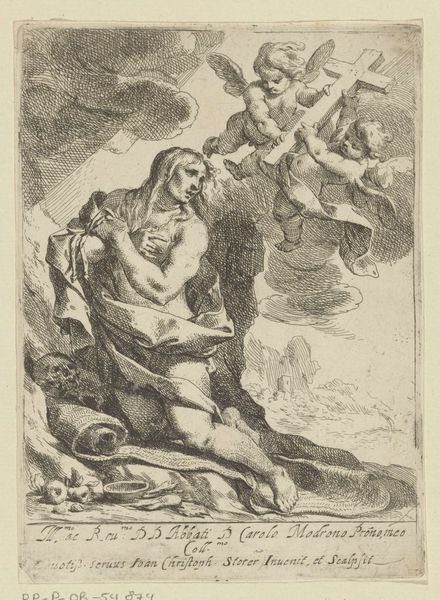
drawing, etching
#
portrait
#
drawing
#
baroque
#
pen sketch
#
etching
#
pencil sketch
#
history-painting
Copyright: Public Domain: Artvee
Editor: So, this is Salvator Rosa's "Young Man, Seated", an etching dating back to around 1656-1657. It’s captivating; the linework is incredibly detailed and a bit frantic, almost like the artist was capturing a fleeting moment. What historical context do you see at play here? Curator: Looking at Rosa’s etching, I see an engagement with the culture of academies and the burgeoning art market of the 17th century. Consider the role history painting played: it was considered the noblest genre, meant to elevate the mind. Rosa, however, often undermines this with his more rebellious figures and unconventional compositions. Editor: Rebellious how? The young man looks fairly noble, laurel wreath and all. Curator: Precisely! But look at the context. This isn’t a grand, finished history painting meant for a palace. It's an etching, more accessible. Who was buying these prints? An emerging middle class with an interest in art, but perhaps less aligned with traditional aristocratic values. Rosa is feeding into that market, offering heroic imagery but on a smaller, more intimate scale. Editor: So it’s not just *what* is depicted, but *how* and *where* it was circulated that matters? Curator: Exactly. Rosa cleverly navigates the institutional landscape, presenting potentially subversive or critical imagery through accessible media like prints. How do you think the "pen sketch" tag speaks to this? Editor: I guess it hints at the informality. Thanks, I'll definitely think more about who the intended audience was when I look at art from this period! Curator: A crucial question to always ask. That kind of questioning is very crucial.
Comments
No comments
Be the first to comment and join the conversation on the ultimate creative platform.
